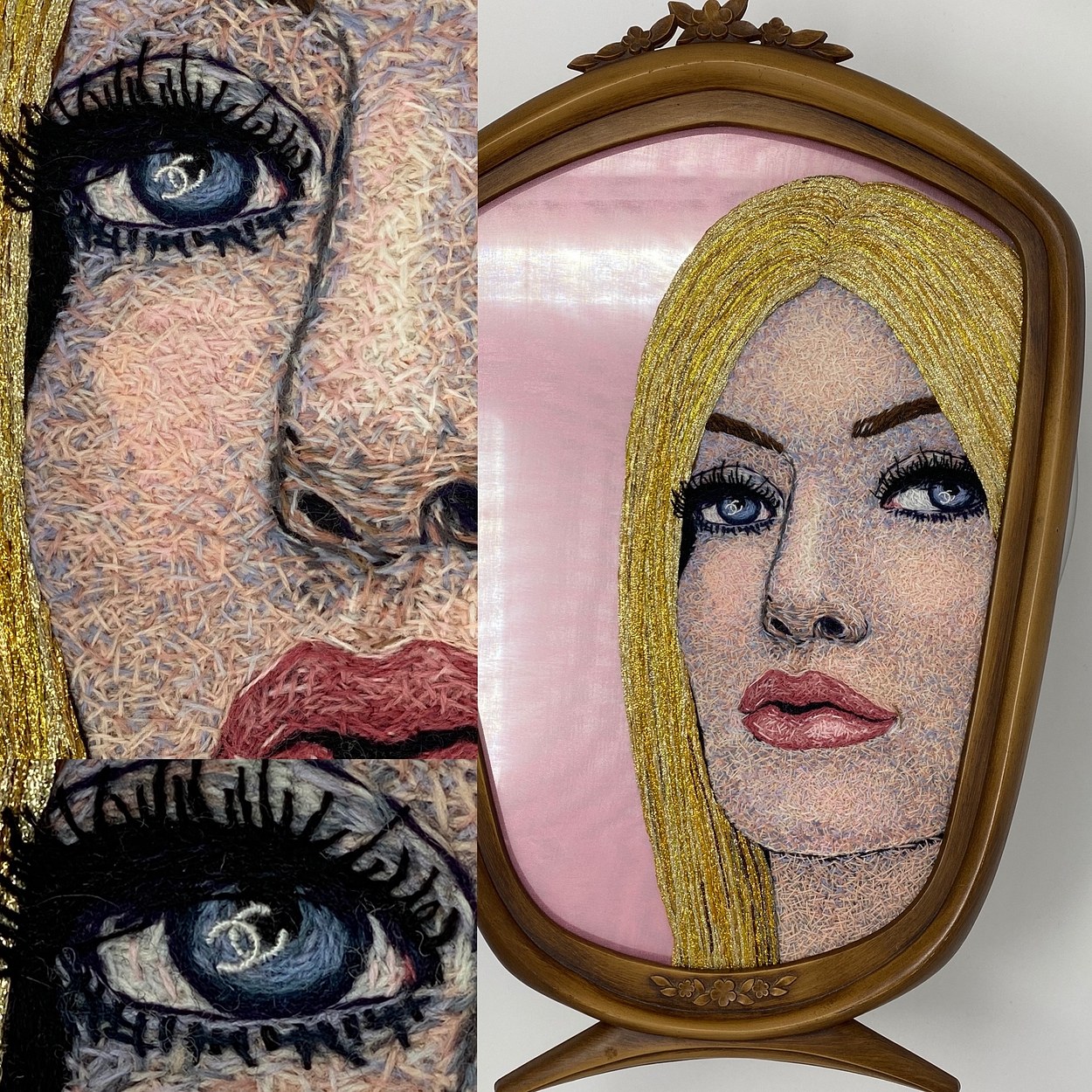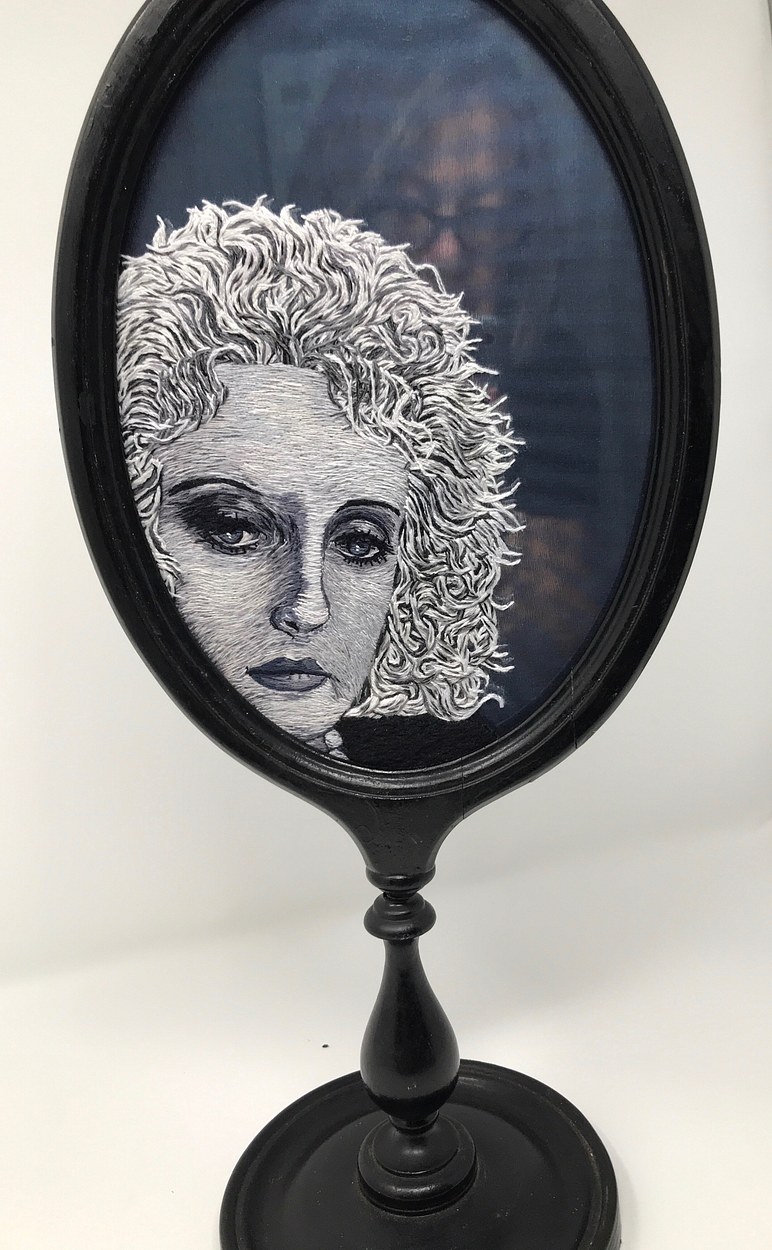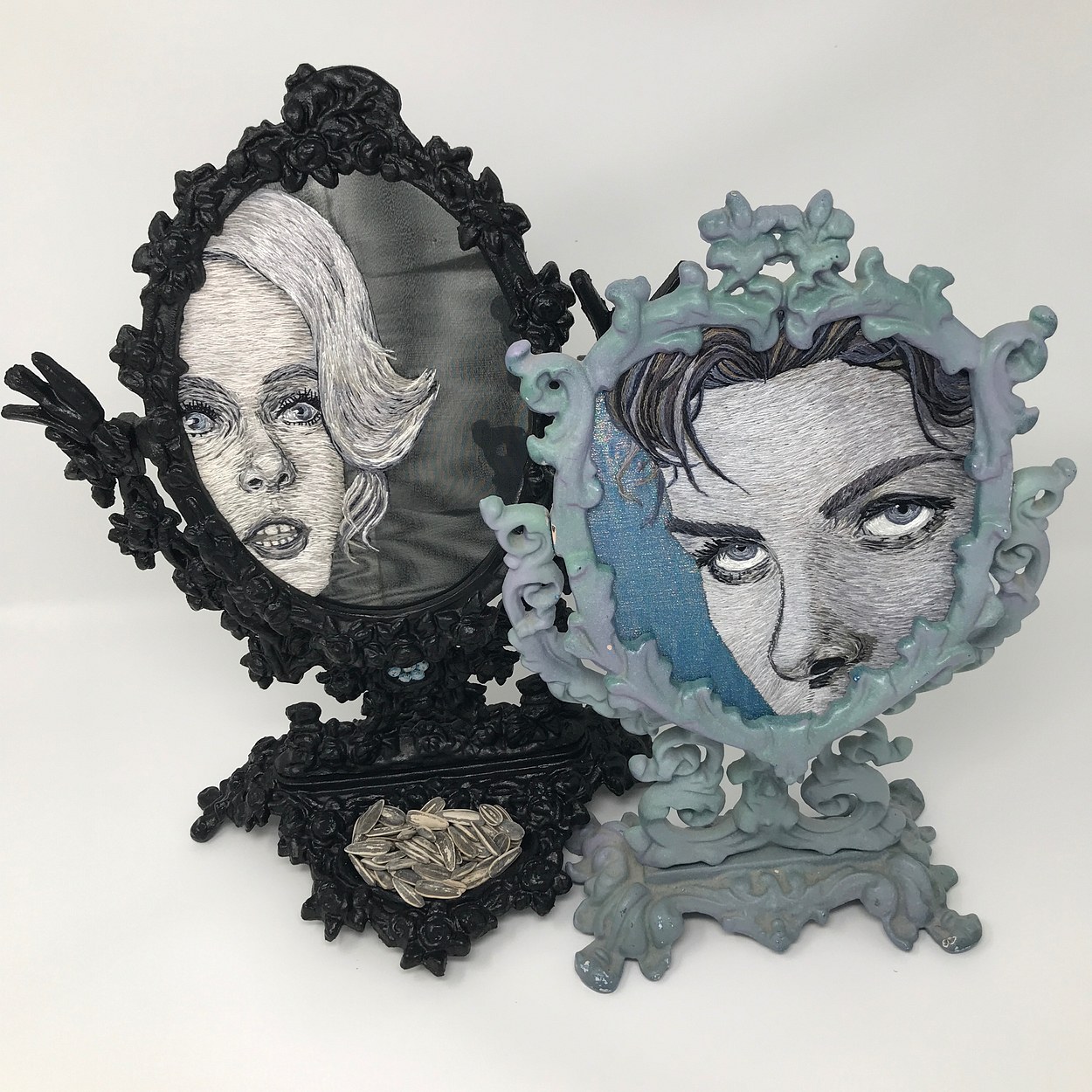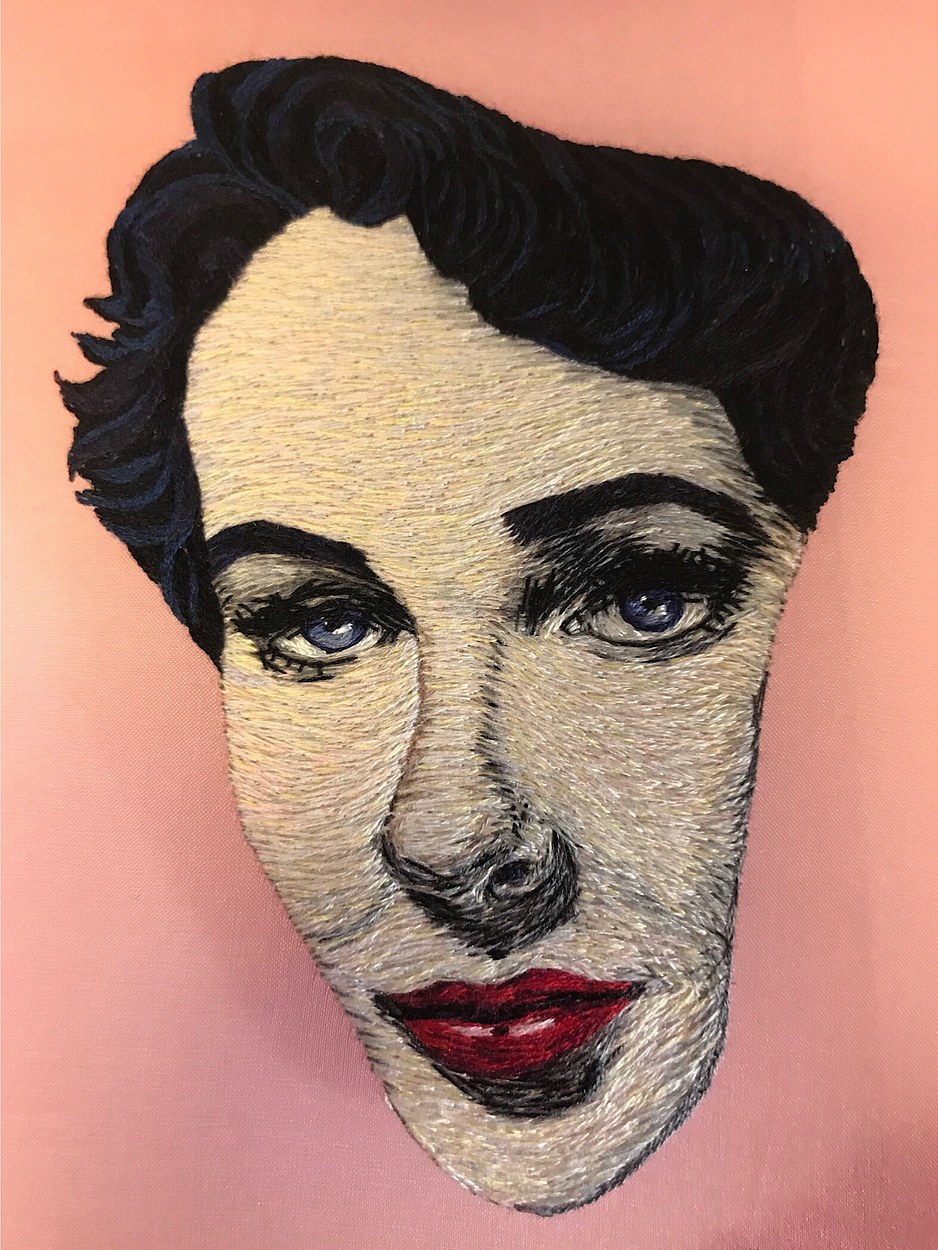What’s missing is your own reflection, which happens only when you interact with these mirrored embroideries...
Embroidery on Mirrors
The Golden Calf, Portrait of a Con
- Year
- 2020
- Dimensions
- 14" x 20" (WxH)
- Price
- 9750

















The Bride, Melanie and Paula
From left to right are pictured actresses Elsa Lanchester in “The Bride of Frankenstein,” Tippi Hedrin in “The Birds” and Ingrid Bergman in “Gaslight.”
Each of the three women is an iconic female cinematic character caught in a moment of coping with a stressor within a culturally feminized “box” of either her own or another’s creation. In each, masculine directorial choices (or, perhaps, each actresses’ own sartorial sensibilities) depict the women’s outward beauty as weighted with much greater significance than each of their character’s interior thoughts.
In each image, no matter what her circumstance, the three women are presented as “beautiful” by western cultural standards. Only Bergman (arguably the single “A” list actress of the three) is permitted to look angry or afraid, but in her anger she still adheres to classical beauty norms with a smooth, statuesque inscrutability beneath her glinting eyes.
In the arcs of the stories of the three protagonists, only Paula (Bergman) is ever able to break free from the societal constrictions which bind her; the Bride (Lanchester) and Melanie (Hedrin) each end their stories as little more than inanimate accessories to the male stars of their respective films.
I was interested in embroidering these scenes first as a meditation on the role of beauty in how women in our image obsessed culture respond both internally and externally to the stressors that they experience; of exploring the taboo of presenting an “ugly cry” on a face that is filled with snot, tears, wrinkles and emotion.
As I embroidered each, I found myself contemplating how much we as human women and men can say with only a fleeting expression or glance, and just how inept we often are at reading or even noticing those communiques. The mirrors are meant to both reflect and to cause reflection; how can contemporary viewers “read” these half century old expressions? Can their messages be both timeless and timely?







































The Golden Calf, Portrait of a Con is imbued with symbols that reflect contemporary political, economic and celebrity culture. “The Calf” is based on a street photo I took of a mannequin in the Chanel Store window on Bond Street while visiting London for my first international group exhibit.
As I passed the store on foot, I noticed six milk white mannequins standing sentinel over the completely empty shop (it was mid-afternoon), and what caught my eye initially was the static fakery and creepy sameness of the well-dressed guardians. Every mannequin was cast from the same mold, and each was coiffed with stick straight hair, parted in the middle and hanging just below the shoulders. Other than the clothing hanging on the mannequin’s thin, reedy frames, the only differences of note in the display were the colors of the model’s hair and eyes.
Rather than a feeling of invitation, the exclusive and intimidating window onto the one-percenter’s world inspired in me only a sense of foreboding, judgement and impending doom. As a coach-flying middle-class woman of a certain size and age, I did not feel either welcomed or encouraged to enter that store or any other in the exclusive shopping district.
Naturally, I sought an artistic intervention to process my feelings about this cold and joyless visual display; I took out my phone, stood tall on a curb and cheekily grabbed some pictures.
When I got home and printed off what I had captured, I was further creeped out when I looked at the eyes of each mannequin. Centered in each pupil was a delicate double C Chanel Logo which both branded the figure and symbolically suggested a conforming single vision locked with deliberate exclusion on the luxury brand.
One of the photos featured a blonde wigged mannequin in a well-lit three quarters pose. With her stone like skin, plasticy hair and thick fringe of lashes, the figure was so obviously fake; as I thought about it, I concluded that the challenge she offered was to see if (like Pinochhio) I could make her into a “real” woman through embroidery.
As I embroidered the piece, I concluded that the original source for all of the mannequins was, without a doubt, then President Trump’s favorite daughter. With every stitch, I thought “Gee, she looks really familiar,” but I couldn’t quite place who (other than the mannequins) she looked like. Once I realized that it was Ivanka Trump I was seeing, as much as I wanted to, I could NEVER unsee it.
Whether Ivanka’s face was featured by the window’s dressers as a subtle form of flattery to Ms. Trump or to aspirationally encourage those who admire her I have no way of knowing, but the more I embroidered the porcelain skin and ironed hair, the more interested I became in capturing the artistic alchemy between real and fake, human and mannequin, Trump and trump-l’oiel.
I decided to mount the portrait on an antique mirror because I thought that viewers seeing their own reflection inserted into to the fake/real/reflected image of my subject would give them a lot to ponder as they inserted themselves into what (in its final form) I hoped would look like a selfie that was not a selfie – a reality that was a fake, a fakery that was a real, tangible everyday object.
The Golden Calf (at least for me) documents Donald Trump’s relationship with his own “golden calf,” his daughter Ivanka. And, as we all know from Edward G. Robinson’s holding it aloft in the classic Ten Commandments movie, a golden calf is only a distraction from the one true God; just a shimmering idol used by a con man as an object of worship and distraction.
Rather than Ivanka’s deep brown irises, Chanel (and I) gave this golden calf Arayn blue eyes to match the shimmering blonde tresses. I don’t know that Mr. Trump would even note any difference between his breathing, flesh and blood daughter and the false idol of his convenience.